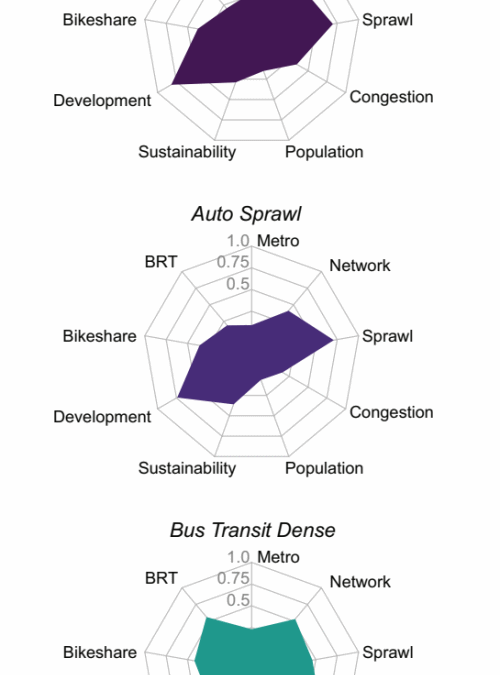“It’s unbearable”: in ever-hotter US cities, air conditioning is no longer enough – “The types of cooling systems that we sold 10 years ago are not able to keep up with the weather we have”

By Delaney Nolan
11 Jun 2024
(The Guardian) – Gloria Gellot, 79, takes a careful seat in a kitchen chair in front of her only air-conditioning unit, massaging her knees. She’s hung a sheet in the doorway to keep the cool air in the kitchen, and drawn shades to keep the sun – already blazing in May – out of her second-floor New Orleans apartment. Her home was badly damaged by Hurricane Ida in 2021, and heat radiates from the gutted walls.
“All the heat’s up here,” she says. “I don’t have to go out in the sun. I get a suntan inside.”
Gellot’s sweltering apartment is not just uncomfortable; it’s dangerous. Extreme heat was linked to some 11,000 deaths and 120,000 emergency room visits last year. Heat injuries don’t just happen in sun-soaked fields – older adults like Gellot who live alone and cannot escape stifling, poorly insulated units are among the most at risk.
Conventional wisdom and public policy have long operated on the assumption that, no matter how bad the heat gets, air conditioning will be enough to keep people safe. But the last few years of record-breaking temperatures are shattering that myth.
“The home environment can actually be a substantial risk in and of itself,” said Jaime Madrigano, a public health researcher with Johns Hopkins University. “We find, during extreme heat events, that more people die in their homes than in other types of places. They’re not making it to the hospital.”

Storm-battered homes like Gellot’s lack proper insulation. Power grids stumble and fail during periods of high demand. And many cooling systems are simply not powerful enough to contend with the worsening heat. Some experts have begun to warn of the looming threat of a “Heat Katrina” – a mass-casualty heat event. A study published last year that modeled heatwave-related blackouts in different cities showed that a two-day blackout in Phoenix could lead to the deaths of more than 12,000 people.
Last summer, Madrigano led a team of researchers who put temperature sensors in the bedrooms of 70 volunteers in Gellot’s lower-income, mostly Black Ninth Ward neighborhood. Amid New Orleans’ hottest-ever summer, “about a quarter of our [average] measurements exceed 80F (27C)”, she said. About half of the homes exceeded 80F at some point in the day.
There is no single standard for safe indoor temperatures. With each degree of temperature rise, however, participants reported more symptoms of heat illness: dizziness, headaches, nausea, weakness, and fatigue.
“It’s almost hotter inside than outside,” reported one participant, who said she still got an $800 energy bill. Another participant described being “just overwhelmed” and taking showers to stay cool. “I can see how it’s going to be in years to come,” he added.
Most participants, like Gellot, had air conditioning, Madrigano said. “At first look, that sounds great,” she said, but what that reveals is that air conditioning is simply no longer enough in ever-hotter cities.

Cooling systems can’t keep up
“The types of [cooling] systems that we sold 10 years ago are not able to keep up with the weather we have,” said Simi Hoque, an architectural engineer at Drexel University who studies how building design contributes to indoor heat.
As temperatures climb, air conditioners – which work by sucking in indoor air, heating it via compressor and then dumping that heat outside – must work exponentially harder. According to Texas A&M climate scientist Andrew Dessler, keeping a home steady at 75F requires about 30% more power when outside temperatures creep from 95F to 98F.
Some older AC units simply cannot keep up with those demands. Even if they can, many residents can’t afford higher energy bills. Sharp rises in energy demand stress electrical grids: in 2021, a heatwave in the Pacific north-west triggered rolling blackouts, which led to at least 600 deaths.
Many buildings – particularly those in cooler, northern US cities – are simply not designed or weatherized for the new heat, said Hoque. She became interested in indoor heat while working on an air-quality study in Philadelphia, where she lives.
“When we talked to household members, [heat was] the thing that kept coming up,” she said. Participants told her: “‘We can’t be in our upstairs bedrooms during the summer unless we have the window unit on, and we only have one window unit, and so everybody sleeps in the same room,’” Hoque recalled.
Hoque said that there are a lot of gaps in indoor heat research and that she uses wet bulb measurements, which take into account humidity as well as temperature, when assessing indoor conditions.

Extreme heat and redlining
Extreme heat disproportionately affects communities of color.
Black and Hispanic communities, in particular, are more likely to live in urban heat islands, where asphalt traps more heat than greener, typically wealthier neighborhoods. The disparity is a legacy of decades of redlining and other racist housing policies. People at higher risk of indoor heat also “tend to have fewer resources to be able to pay for things like air conditioning or fans”, said Hoque, and these factors have serious public health implications: in New York City, according to state data about last year’s record heat, Black residents are twice as likely to die of heat than their white counterparts.
Even when heat isn’t deadly, it’s damaging. Heat triggers respiratory distress, acute cardiovascular events, disrupted sleep and impaired cognition – in other words, heat makes it hard to breathe, hard to sleep, hard to think.
“It’s unbearable,” said Dee Dee Green, an organizer in New Orleans’ Hollygrove neighborhood, a lower-income, primarily Black neighborhood bordered by highways. Green said her AC has broken the last three summers in a row. She suspects it is due to the unit overworking.
Raymond Sweet, another organizer who works near Green, said hotter indoors lead to compounding costs for lower-income households: “You used to put out a banana for a week. Now stuff gets spoiled in two or three days.” That in turn requires more trips to the grocery store, and more money spent on groceries that spoil in hot kitchens, he said.
Surrounding trees keep Sweet’s home cool, but elsewhere, the neighborhood gets “too hot to even walk around”, he said. He’s teamed up with neighbors to plant trees and press the city to build bioswales, which have the added benefit of reducing flooding.
Many lower-income Americans are eligible for federal energy-assistance funds to help cover the costs of air conditioning. And after deadly heat last summer, New Orleans policymakers enacted an ordinance requiring landlords to provide enough AC to keep bedrooms at or below 80F. But the program has not been assigned any funding, giving program administrators limited means of enforcement.
Hoque worries about what it’ll take for policymakers to take the risk of indoor heat seriously enough. “Changes are made only when something dire has happened,” she said. For people like Gellot and her neighbors, “the dire thing has already been happening”.
‘It’s unbearable’: in ever-hotter US cities, air conditioning is no longer enough


